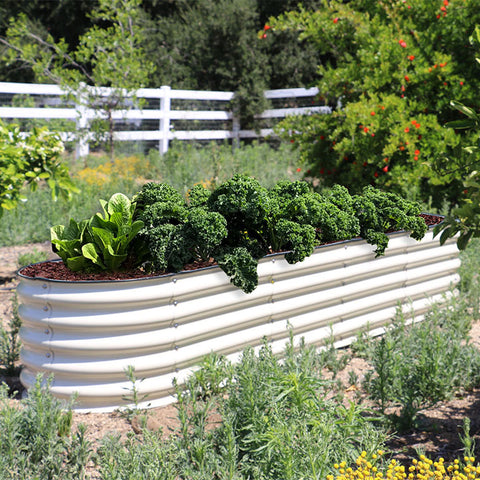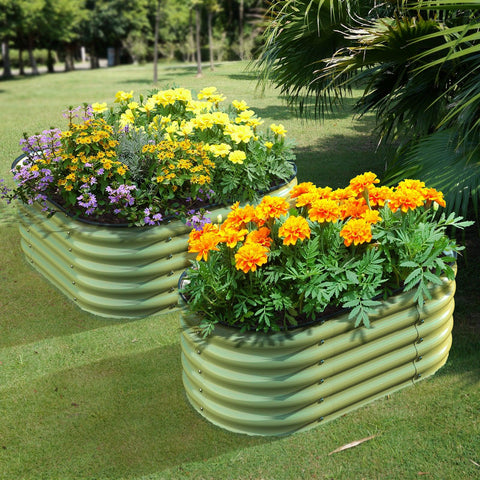Planting Herbs on Raised Garden Beds
The raised garden bed is a good place to plant different herbs! It is very space saving, allows you to make full use of small space, and is relatively easy to maintain. Raised garden bed gardening is also suitable for people with limited mobility, because the raised and narrow planting space makes gardening faster, easier and more accessible.
Raised garden beds are available in various types and designs. Some may work well in a particular space, while others may not, so it is best to measure the area you are going to use before obtaining a raised garden bed. This is especially true if you purchase a raised garden bed online.

Does herbal medicine work well on the raised garden bed?
The quick answer is yes; Most herbs work well on raised garden beds. The roots of many herbaceous plants are relatively shallow and small in size. Generally speaking, a well drained rectangular raised garden bed is the best choice for planting herbs. Most herbaceous plants have relatively shallow roots, so the raised garden bed need not be too deep. Small and medium-sized herbs are most effective in raised garden beds or layered raised garden beds. As for large herbs, their size can be controlled by regular pruning and harvesting.
How deep should the raised garden bed of herbal medicine be?
The height of the raised garden bed is important for drainage. Raised garden beds should be deep enough to accommodate at least 12 inches of soil below the bed. Raised garden beds with a height of 8 to 12 inches are best suited for small herbs. For herbs that grow taller and prefer dry soil, we suggest choosing higher raised garden beds and using porous growth media instead of ordinary garden soil.
How to plant herbs on a raised garden bed?
It's easier than you think to plant different herbs on a raised garden bed. The following are general tips for herbal gardening:
- Higher herbs should always be planted in the back, while smaller, creeping and trailing herbs must be planted in the front. If planted in the front, taller plants will shade smaller plants, resulting in slow growth and wilt.
- Don't use ordinary garden soil, because it absorbs too much water and is very heavy. No matter how durable the raised garden bed is, it may give way because of its heavy weight. Use a potting mixture or porous growth medium instead of garden soil. Use organic compost to improve the soil only when needed.
- Before purchasing a raised garden bed, please be sure to pay attention to the full size of herbs. Many herbs will not grow too tall, but must be planned:
- Rollers: up to 12 inches tall
- Caraway: up to 18 inches tall
- Carrots: 3 to 6 inches long
- Chives: up to 12 inches tall
- Dill: up to 12 inches tall
- Lavender: up to 18 inches tall
- Lemon Verbena: up to 36 inches tall
- Mint: up to 18 inches tall
- Some herbs cannot be planted together in a confined space. For example, fennel and wormwood are best grown away from other plants. Keep sage, basil and cabbage away from rue. Dill and fennel should not be planted side by side with carrots. Dill is not suitable for growing with tomatoes. Salvia should not be planted near onions and cucumbers.

What kind of raised garden bed is best for herbal medicine?
Many herbs will thrive on the raised garden bed, but usually choose herbs with shallow roots, such as:
- Rosemary
- Oregano
- Dill
- Sage
- Mint
- Parsley
- Leek
- Coriander
- Basil
- Ma Yulan
- Kuming
- Lavender
- Salty tarragon
- Garlic
- Tea
- Chamomile
- Citronella
- Leonurus heterophyllus
- Licorice
- Calendula
Planting herbs on a raised garden bed is easy, especially if you have all the materials you need to build a raised garden bed garden.
